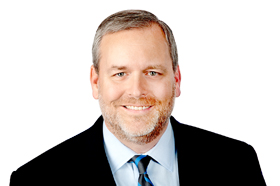Running any organization well, both profitably and with a high degree of quality, requires optimizing the businesses processes—running it efficiently. But the term “efficiency” isn’t as straightforward a concept in medicine as it is for, say, a tool-and-die factory. Continual cost-cutting and standardization of organizational processes, if held as a goal of its own, would rapidly lead to worse patient outcomes—and would lead to a need for more patient care, not less.
Setting improved patient outcomes as the primary goal of a healthcare organization, though, doesn’t exist in opposition to efficiency. Rather, the correct paradigm is to see creating efficient processes within an organization as a prime tool to achieve a healthier community. Within that framing, properly defining what efficiency really means in a healthcare setting helps to understand how to recognize and implement more efficient processes that can translate into better profitability and improved outcomes.
Finding balance
Efficiency in a healthcare context
Because healthcare deals literally in matters of life and death, providers must always be thoughtful about how changing processes can impact care. With that in mind, boosting efficiency in a healthcare organization means minimizing misdiagnoses, or minimizing infections or performing the wrong procedure for patients. Some studies have estimated that up to a quarter of all patients are harmed by healthcare at some time.
Grant Thornton Managing Director, Healthcare Advisory, John Summerlin said another way of looking at “efficiency” is to remember that because people are an organization’s greatest assets, ensuring they are working at their highest level is a priority. Automation can help that, Summerlin said, by taking less skilled tasks from clinicians so as much as possible they are working at the top of their licenses, not bogged down in paperwork that doesn’t reflect their training.
Grant Thornton National Healthcare Delivery Leader David Tyler said, “You shouldn’t sacrifice doing the right thing for doing the cheaper thing. “Quality outcomes” and “efficiency” are not opposites, as people may believe.” Tyler said doing the right thing for your people: your physicians, nurses, support staff and your customers, the patients, has the added benefit of being a smart business decision as well as the smart medical decision.
Learn about efficiency in other industries
Choosing where to focus
Improving processes
It seems almost a tautology to say that improving efficiency is best done through improving organizational processes. A more useful way to look at process improvement, Tyler said, was to see it as the product of many efforts, which includes better use of technology, instituting cost control measures and outsourcing.
There are processes around how we bring patients into a clinic, how we take them back to an exam room, how we take them to the to the operating room, Summerlin said. There also are processes that are broken around how bill collection services are rendered. Efficiency in healthcare is really about improving these processes, whether they are business or clinical processes, and making sure that they're optimized to minimize harm and to maximize value.
Many healthcare organizations routinely use automation, including robotic process automation, to improve financial and operational tasks like payment processing and insurance claim statusing, and providing accessibility to authorized people so that adjustments can be made quickly without bottlenecks.
“We could check on a claim that we submitted last week every single day, and if a human's doing that, then we're waiting every single day for them to check,” Summerlin said, “and that's just man-hours that are being consumed.”
Automation also significantly improves the ability to schedule personnel more efficiently, a process that until fairly recently was still done manually. Automating process allows healthcare systems to determine the staffing mix of nurses, nurse assistants, custodial and other staff to maintain the highest quality of onsite care while reducing unnecessary overtime or the use of expensive contract labor.
Managing physician preference
Tyler said barriers to instituting quality efficiency measures in healthcare aren’t always a matter of implementing new technology, but investing time in easy-to-understand but difficult-to-implement tasks such as managing physician preference items (PPI). The variety of choices and the human nature of medical care is such that the tools physicians use to perform both routine and specialized treatments may vary widely from person to person. These items can range from advanced surgical tools to in-office blood pressure monitors to disposable rubber gloves.
While all professionals will develop preferences over time of the materials they use, that sort of individuality can be difficult for healthcare organizations to satisfy at times, as it conflicts sometimes with the ability to, say, purchase in bulk to take advantage of economies of scale.
“We're dealing with physicians who are highly trained, highly skilled, and have a perspective about what their preferred tools are,” Tyler said. “Sometimes, those tools make a clinical difference and improve quality and are worth the cost—and sometimes they don’t.” Getting PPI choices done correctly can make an organization more efficient and more cost-effective, but it's not easy to do. Better analytics can identify choices, but it doesn't make the solution any easier to execute, Tyler added. Sometimes there are not measurable differences between items, so it becomes at times a difficult conversation with a physician to refuse to purchase a preferred item.
Often physicians, and healthcare organizations, can have relationships with particular equipment suppliers that have been profitable for both, and it’s sometimes difficult to advocate purchasing supplies elsewhere. Ultimately, healthcare is an industry where you are employing highly specialized people where responding to their supply preferences is a way to ensure efficiencies in care without always using the cheapest acceptable alternative.
Determining the best way forward
One key barrier to proper assessment of improving efficiency is determining who in the organization has the knowledge necessary to recommend changes.
In addition, particularly for not-for-profit organizations, the lack of a focus on profitability can sometimes lead to less focus on seeking out and instituting efficiency measures. Competition can often drive innovation, so NFP healthcare organizations that want to streamline processes can find answers in for-profits that already have innovated under pressure.
Tyler said it can be the case that healthcare organizations know how to make processes more efficient, but they don't have the ability to do so. But when organizational knowledge is lacking, often a third-party advisor can bring the expertise and knowledge of various systems that would take much longer to gain through an independent study.
“I think sometimes clients aren't sure what problem they're solving and how to go about doing it,” Summerlin said.
Contacts:



John Summerlin
Managing Director, Business Consulting
Grant Thornton Advisors LLC
John is a Managing Director in Grant Thornton's national Healthcare Advisory practice focused on Operations Transformation.
Atlanta, Georgia
Industries
- Healthcare
- Not-for-profit and Higher Education
Service Experience
- Advisory Services
- Business Consulting
Efficiency in other industries
More healthcare insights

No Results Found. Please search again using different keywords and/or filters.




Share with your network
Share